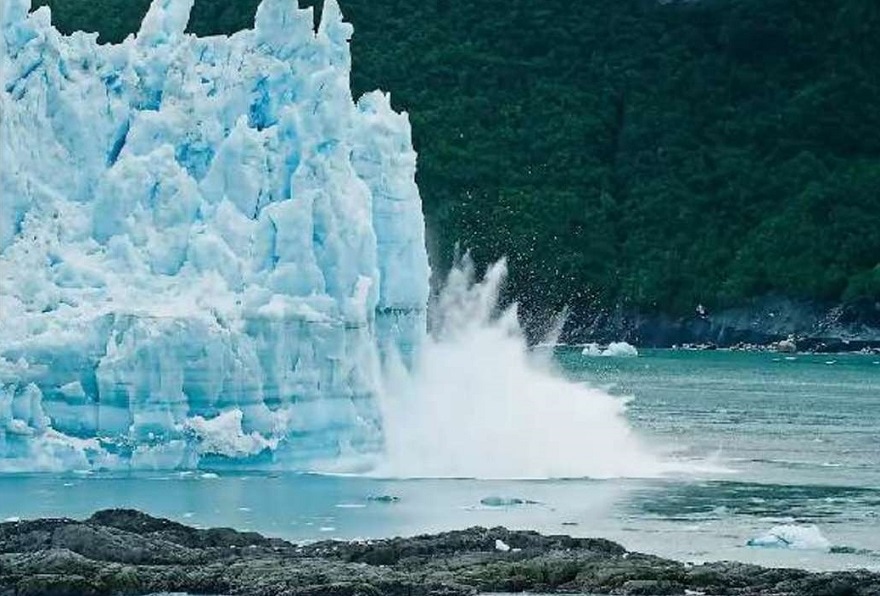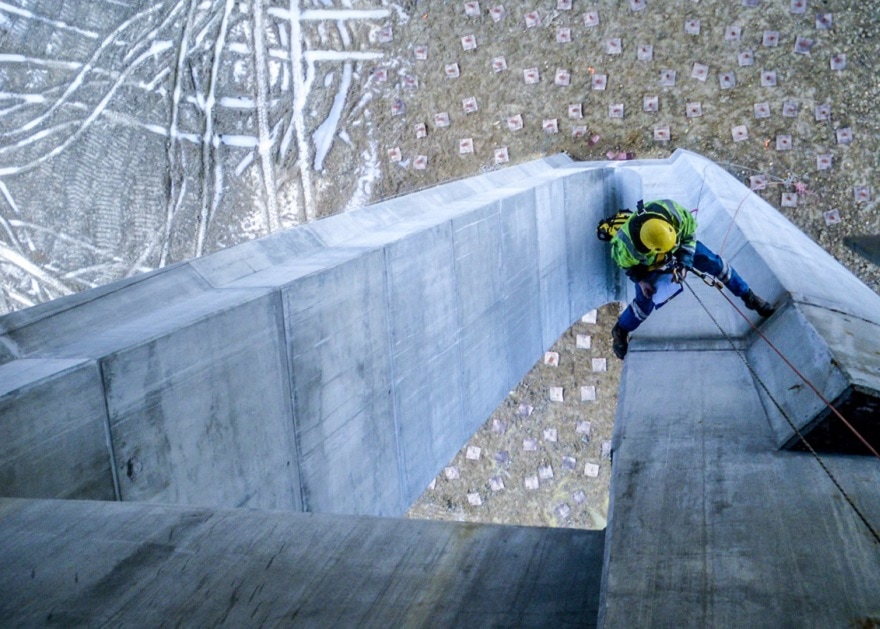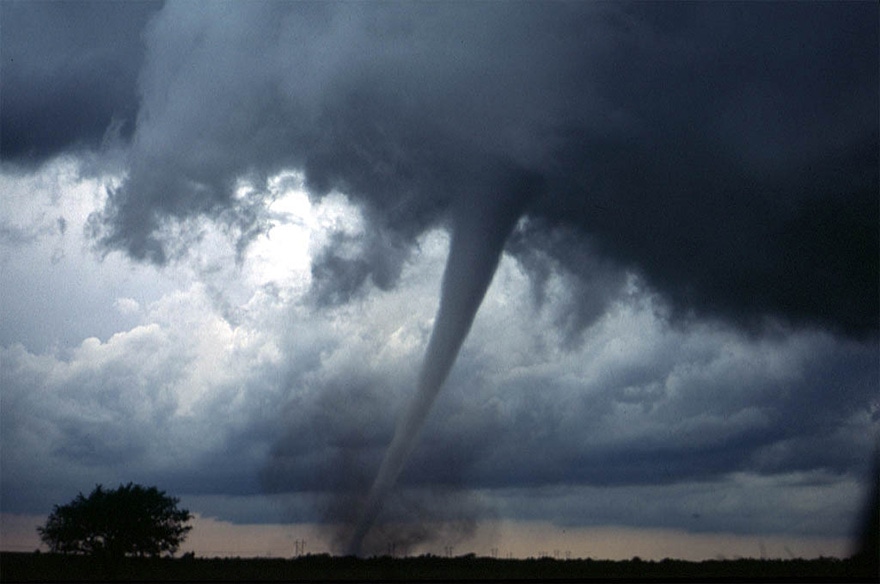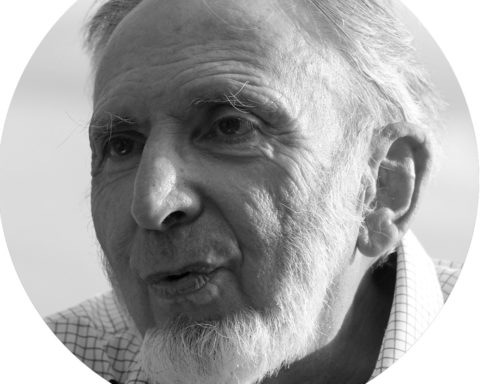It was launched in 2017 in Saint-Malo. Destination: Northern Europe. Today, Energy Observer is taking up the challenge of becoming the first ship in the world to reach the Arctic thanks to renewable energies and hydrogen. A technological and citizen challenge, a universal message addressed to decision-makers at a time when the Paris Climate Agreement is more fragile than ever. Victorien Erussard, Jérôme Delafosse and the crew of Energy Observer have developed the first autonomous vessel, capable of drawing its energy from nature without damaging it.
Energy Observer is the first hydrogen ship around the world aiming at energy autonomy. With no greenhouse gas emissions or fine particles, this ship of the future with electric propulsion operates using a mix of renewable energies and a system for producing decarbonated hydrogen from seawater. This technological and scientific challenge aims to test in extreme conditions cutting-edge technologies prefiguring tomorrow's energy networks, applicable in terrestrial environments. It is the first hydrogen ship around the world aiming at energy autonomy.
The Arctic, a first for an ENR and hydrogen ship
After two years of navigation and optimization, Energy Observer is about to accomplish an historic navigation, the longest since its departure from Saint-Malo in 2017. It will thus become the first ship in the world to reach the Arctic Circle powered solely by renewable energies and hydrogen. 2400 miles to sail between Saint Petersburg and Longyearbyen in Spitsbergen along the west coast of Norway!
" With the technological bricks in place and the new Oceanwings, the ship is now in a position to embark on such a crossing. The recent sailings have been a success. From Helsinki to Tallinn, from Tallinn to St. Petersburg the ship arrived with 100 % of battery and hydrogen. It was able to create and store energy while navigating thanks to solar-coupled hydrogenation. We'll have to be clever strategists and choose the right weather windows to head back up to the Arctic, which can be tricky. "explains Victorien Erussard, captain and founder.

Energy Observer in Finland © Energy Observer - Antoine Drancey
A new technology on board: wind propulsion wings, a world first
On April 18, 2019, Energy Observer acquired a new technological brick of wind propulsion: two Oceanwings, rotating, self-supporting and 100 automated % wings, which will increase the ship's speed and produce hydrogen during navigation, by electrolysis of seawater. This technology has never before been tested on the scale of such a large ship, and could well revolutionize maritime transport.
The Oceanwings, the largest wings tested to date, are the result of a concept patented by VPLP design co-developed in partnership with the CNIM Group. Energy Observer will thus provide an unprecedented feedback for the maritime transport of the future. The wings, each with a surface area of 31.5 m², are self-supporting and can rotate 360°.
VPLP Design draws its inspiration and experience from the rigid America's Cup wings whose aerodynamic efficiency is far superior to traditional sails. However, one fundamental reason has limited their development: their rigidity. Until now, they lacked the ability to reduce surface area, in other words, the ability to stow and lower, as on a classic rig. A first-rate ambition to propose a simple solution to overcome this obstacle and democratize the use of rigid wings.
Thanks to Ademe, a complete functional prototype with a wingspan of 8 m has made it possible to validate the feasibility of the wings, to make the systems more reliable and to loop the navigation surveys on the performance prediction models (VPP) developed in-house. Victorien Erussard was won over by the technology while sailing with Marc Van Peteghem during Energy Observer's Odyssey for the Future.
Initially, they will be dressed in Hydranet, a resistant fabric that can be painted or varnished. Energy Observer's engineers are working on selecting the best technologies for flexible photovoltaic panels to make them solar-powered and therefore capable of producing photoelectric energy.
The installation of the Oceanwings on board Energy Observer is a first step in reducing the environmental impact of global shipping. According to simulations carried out on a very large panel of ships, the results are extremely promising: from 18 to 42 % less energy expenditure. A significant figure when one considers that 90 % of world trade transits by sea. Maritime transport is also responsible for heavy air pollution by releasing pollutants such as fine particles, nitrogen oxides (NOx) and sulphur oxides (SOx) into the atmosphere.
"Beyond pure technology, which we are just beginning to test on board, I strongly believe that these wings can be a real technological breakthrough in reducing energy costs for commercial ships. Combined with hydrogen, it is the winning combo for clean maritime transport", enthused Victorien Erussard.
An approach that is in line with a logic of economic profitability and responsible design. Although wind propulsion allows a double-digit reduction in fuel consumption, it does not require dedicated personnel; automation of the rigging is therefore essential. Industrialization, thought out from the design stage, makes it possible to offer a price comparable to that of a performance rig, which can be quickly amortized for professionals.

Victorien Erussard and Jérôme Delafosse - Departure from Saint Petersburg © Energy Observer - Amélie Conty
(Un)show to raise awareness
The crew of Energy Observer would like to share this crossing with as many people as possible to raise awareness of the consequences of our industrial and human activities. And thus demonstrate that there are alternatives to fossil fuels thanks to the production of energies that do not emit greenhouse gases, all without impacting biodiversity.
For Jérôme Delafosse, expedition leader and director, "This journey marks a real turning point in the expedition: technological on the one hand, but also human and on the message we wish to convey on the other hand. We chose to reach Spitsbergen because it is "Ground Zero", the epicentre of climate change. This archipelago alone crystallises the major challenges of the climate emergency and shows the human impact on ecosystems. If we manage to reach it thanks to renewable energies in extreme environments, then we will prove that man can be reconciled with nature. This is one of the challenges of the coming decades. "
Spitsbergen and the polar regions have been experiencing global warming for many years. They are a true compass of the state of our climate. Many scientists have already identified it for a long time and the United Nations recently recalled it in March 2019. We are aware of the consequences of rising temperatures, in particular the melting of ice (rising water levels, release of greenhouse gases from permafrost, disruption of ocean currents, disappearance of flora and fauna and of course the deterioration of living conditions for the people living in these regions...).
Norway, 23rd country in the Odyssey for the Future
Energy Observer will show all the beauty and fragility of this Arctic ecosystem, along the coasts of Norway, a country emblematic of an awareness of the climate emergency. Despite its abundant hydrocarbon reserves, Norway has resolutely oriented its energy policy towards renewable energies and hydrogen, while investing massively in environmental protection.
With its incomparable beauty, the Norwegian coastline will be the scene of a real challenge for the team and the boat, which will once again demonstrate its ability to face extreme weather conditions.
A "scouting" expedition?
In September 2018, another ship had also broken through the Arctic seas, but it was a completely different kind of ship: the world's first container ship, theVenta Mareskborrowed the Northern Sea Routethe legendary Northeast Passage that runs from the edge of Alaska to the top of Scandinavia, along the desolate Siberian coast of Russia. A feat that was impossible just a few years ago but which is now possible because of the rapid and deeply troubling retreat of the sea ice. Previously, the Venta takes the Suez Canal and extends its journey by a good ten days to reach the same destination.
READ UP : Arctic routes are opening up and the geography of globalization is changing.

For some, global warming is a blessing. Around the Arctic, as we know, the riparian states, which had abandoned this part of the planet, have been trying since the middle of the 20th century to take "their share" of the Arctic. Because of the natural wealth of its territories and their strategic importance, the interest of border states, as well as others further away, has been revived. This is whatu'explique Julien Vilar, from the University Toulouse 1 Capitole: "Three factors are going to play a role: the "maritimisation" of the Arctic, which will open up new communication routes (the costs would be cheaper than going via Panama or Suez to reach other continents), its growing military potential through the First World War, the Second World War and the Cold War, and finally the wealth of its natural resources that are still unexploited (gas, oil, precious minerals, etc.). »
The roads in the North will therefore be very much in demand, but they will also be closely monitored, particularly from an ecological point of view, to avoid exacerbating the damage already caused by man. By sailing "green" around the world thanks to hydrogen, Energy Explorer serves both as an example and a showcase: the boats passing through the future Northern routes will have to be "clean" and respect at least the surviving ecosystems.
An event documentary
This navigation will lead to the filming of a 90-minute documentary event that will be broadcast on Canal+ in the fall of 2019. A film about a navigation-manifesto to speak out against the rise of a new authoritarian and climate-sceptical axis and prove that we have the knowledge and technology to live in harmony with nature. It is more urgent than ever to mobilize and take action for our planet and our future generations. The decisions we take today will have an impact on the decades to come.
Energy Observer is currently completing a six-year Odyssey into the Future (2017-2022), 50 countries, 101 stopovers, led by Victorien Erussard, founder and captain, and Jérôme Delafosse, expedition leader and documentary filmmaker. A world tour to become a showcase for innovations in ecological transition, to raise awareness about renewable energies, biodiversity, agroecology, mobility and the circular economy, during the stopovers in his itinerant village and on social networks. This 21st century expedition is permanently focused on the implementation of the 17 UN Sustainable Development Goals, for which Energy Observer is the first ambassador for France.
Energy Observer has received the High Patronage of the President of the French Republic, as well as the official support of the European Union, UNESCO and IRENA.

Anything to add? Say it as a comment.












